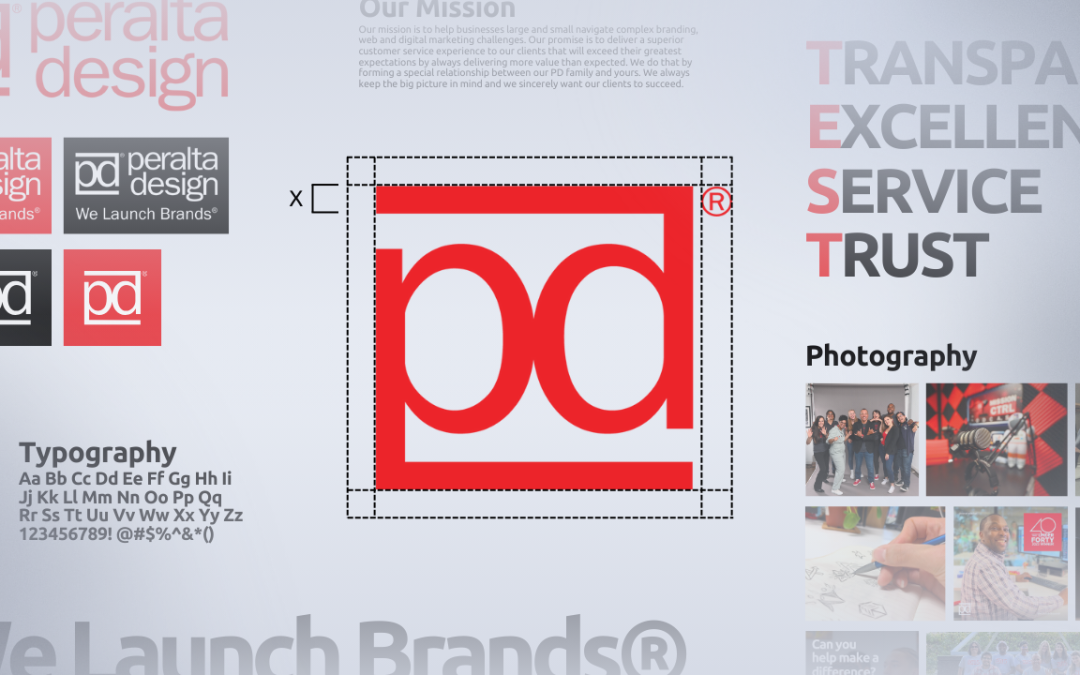In the ever-evolving world of business, establishing a strong brand identity is paramount to success. A brand is not just a logo or a catchy slogan; it’s a complex ecosystem of values, personality, and visual elements that set a company apart. To maintain consistency and coherence in this complex mix, businesses often turn to brand guidelines. In this blog post, we will explore:
- What Brand Identity is
- Why Brand Identity is important
- What Brand Guidelines are
- Components of Brand Guidelines
- Why Brand Guidelines are so important
What is Brand Identity?
A brand identity encompasses the visual, emotional, and cultural representation of a brand. It goes beyond a mere logo and extends to the tone of communication, the color palette, typography, imagery, and even the values that a brand upholds. Essentially, brand identity is the unique fingerprint that distinguishes a company from its competitors and resonates with its target audience.
Why is Brand Identity Important?
Recognition and Differentiation
A strong brand identity makes a company easily recognizable. Think about iconic logos like the golden arches of McDonald’s or the Nike swoosh- they are instantly associated with the respective brands. In a crowded marketplace, memorability is a competitive advantage.
Trust and Credibility
Consistency in a brand’s presentation builds trust. When customers consistently experience a brand in a coherent and reliable way, it creates a sense of reliability and credibility. Trust is a fundamental factor in customer loyalty and repeat business.
Communication
Brand identity serves as a powerful communication tool. It conveys the values, personality, and essence of a brand without the need for lengthy explanations. Customers can quickly grasp what a brand stands for through its visual and verbal cues.
Employee Alignment
Internally, a well-defined brand identity helps align employees with the company’s mission and values. It provides a framework for decision-making, ensuring that every aspect of the business reflects the intended brand image.
What are Brand Guidelines?
Brand guidelines, often referred to as a style guide or brand manual, are a comprehensive set of rules and standards that govern how a brand should be presented across various mediums. They act as a roadmap, ensuring that anyone involved in representing the brand – from designers to marketers – follows a consistent and cohesive approach.
Components of Brand Guidelines
Logo Usage
Specifies the correct and incorrect usage of the logo, including size, placement, and clear space requirements.
Color Palette
Defines the primary and secondary colors of the brand, ensuring consistency in all visual elements. It’s important to keep color psychology in mind when determining your brand’s color palette – if you want to learn more about this check out more on the Psychology of color!
Typography
Outlines the approved fonts and their usage, maintaining a consistent look and feel across all communications. You may be thinking – it’s just a font, but in reality there’s so much more to it than that – check out the 8 best practices every business should know about typography to learn more!
Imagery and Photography Style
Provides guidelines on the types of images that align with the brand’s visual identity, maintaining a cohesive aesthetic.
Tone of Voice
Establishes the appropriate language, writing style, and tone for all written communication, ensuring a unified brand voice.
Reasons Why Brand Guidelines Are So Important
Your team will work faster
Establishing a comprehensive set of brand guidelines facilitates the efficient elimination of ideas that deviate from your brand standards, enabling quicker identification of the optimal choices. This not only expedites the decision-making process but also mitigates potential opinion-based debates among team members by offering a clear set of standards and rules for adherence. Additionally, Brand guidelines mean that your employees will always be using your branding in the correct way – the right shade of blue, the right tagline, the right font, and the right size logo etc.
Your brand becomes more tangible
Brand guidelines help you pull together all the elements that make up who you are, so you can build your identity beyond what you sell. Building your brand guidelines helps keep that consistency so that customers are able to visualize what your brand stands for when they hear your brand name.
Great branding boosts loyalty
Customers develop emotional connections to companies that share their core values. Your brand guidelines aid you in translating those values to your audience in a unique way.
In Conclusion
In the fast-paced and competitive business world, a well-crafted brand identity, supported by comprehensive brand guidelines, is a powerful tool for success. It not only differentiates a brand from its competitors but also builds trust, fosters recognition, and creates a strong foundation for future growth. By investing in the development and adherence to brand guidelines, businesses can navigate the complex world of consumer perceptions and leave a mark in the minds of their target audience.

